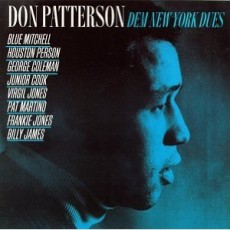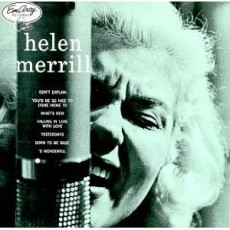
Daily Dose Of Jazz…
Steve Lacy was born Steven Norman Lackritz on July 23, 1934 in New York City. He didn’t begin his career until age sixteen, coming to prominence in the 1950s as a progressive Dixieland musician playing with the likes of Henry “Red” Allen, Pee Wee Russell, George ”Pops Foster and Zutty Singleton, as well as Kansas City jazz musicians like Buck Clayton, Dicky Wells and Jimmy Rushing.
Working extensively in experimental jazz and dabbling in free improvisation, Lacy’s music was typically melodic and tightly structured over a long and prolific career. He became involved with the avant-garde, performed on “Jazz Advance” in 1956, the debut album of Cecil Taylor, and appeared with his groundbreaking quartet at the 1957 Newport Jazz Festival.
Steve made a notable appearance on an early Gil Evans album, however, his most enduring relationship, however, was with the music of Thelonious Monk, his first recorded album in 1958 as a leader “Reflections” featured only Monk compositions. He briefly played in Monk’s band in 1960 and later on Monk’s Columbia session “Big Band/Quartet” in 1963.
Monk tunes became a permanent part of his repertoire, making an appearance in virtually every concert appearance and on his albums. He often collaborated with trombonist Roswell Rudd in presenting interpretations of Monk, Mingus, Ellington and Herbie Nichols’ compositions, rarely playing standard popular or show tunes. In the 1960s he continued to work with other players involved in the American free-jazz avant-garde, and in the Seventies immersed in the European free improvisation scene that would remain an important element in his work thereafter.
Steve became a highly distinctive composer with his signature simplicity of style. He became a widely respected figure on the European jazz scene for several decades, was the recipient of a MacArthur Fellowship, began teaching at the New England Conservatory of Music in Boston and performed one of his last public performances in front of 25,000 people at the close of a peace rally on Boston Common in 2003.
Steve Lacy, soprano saxophonist, was diagnosed with cancer continued playing and teaching until weeks before his death on June 4, 2004 at the age of 69.
More Posts: saxophone

Daily Dose Of Jazz…
Don Patterson was born July 22, 1936 in Columbus, Ohio. He started studying piano as a child, heavily influenced by Erroll Garner but by 1956 switched to organ after hearing Jimmy Smith play. Making his debut on organ in 1959 he played with various groups into the early Sixties that saw him start performing regularly with Sonny Stitt, where he made a name for himself. This led to numerous recording sessions as a leader with Prestige and later Muse Records beginning in 1964 with sidemen guitarist Pat Martino and drummer Billy James.
During the Sixties, Don recorded as a sideman with Eddie “Lockjaw” Davis, and Eric Kloss but his most commercially successful album was his 1964 “Holiday Soul” reaching #85 on the Billboard 200 three years later. However, with his troubles with drug addiction hobbling his career in the 70s, while residing in Gary, Indiana he would occasionally record for Muse Records.
By the 1980s organist Don Patterson had moved to Philadelphia, Pennsylvania and made a small comeback, but his health continued to deteriorate over the course of the decade, forcing him to frequent dialysis until he passed away on February 10, 1988. He left a catalogue of twenty-one albums as a leader and thirteen as a sideman.
More Posts: organ

Daily Dose Of Jazz…
Helen Merrill was born Jelena Ana Milcetic on July 21, 1930 in New York City to Croatian immigrants. The internationally renowned jazz vocalist began singing in jazz clubs in the Bronx at the age of fourteen. By the time she was sixteen, she had taken up music full time and in 1952 made her recording debut when asked to sing “A Cigarette For Company” with the Earl Hines Band that was released on their Xanadu album.
As a result of this exposure she received two subsequent singles recorded for Roost Records and was then signed by Mercury for their new Emarcy label. In 1954, she recorded her first and one of her most acclaimed LP simply titled “Helen Merrill” featuring legendary jazz trumpeter Clifford Brown and bassist/cellist Oscar Pettiford, among others. The album was produced and arranged by Quincy Jones, who was then just twenty-one years old. The success of the album got her signed to an additional four-album contract with Mercury.
Her follow-up 1956 album Dream of You arranged by Gil Evans was the precursor to the musical foundations for his Miles Davis years. By the 60s she was in Europe touring and enjoying greater commercial success than in the States. Developing a following in Japan that remains strong to this day, she not only recorded in Japan, Merrill became involved in producing albums for Trio Records and hosting a show on a Tokyo radio station.
Helen returned to the U.S. in 1972 and has continued recording and regular touring since then. Her later career has seen her experiment in different music genres, recording a bossa nova album, a Christmas album a Rodgers and Hammerstein album, as well as resurrecting “Dream of You” in 1987 with fresh arrangements titled “Collaboration” and co-producing “Billy Eckstine Sings With Benny Carter” and singing on duet on two ballads. By 1995 she recorded “Brownie: Homage to Clifford Brown in tribute to the late trumpeter.
Helen Merrill’s career has spanned six decades with no fade in her popularity and has recorded and performed with some of the most notable figures in the American jazz scene such as Chet Baker, San Getz and Romano Mussolini, among many, many others.
More Posts: vocal

From Broadway To 52nd Street
Brigadoon opened at the Ziegfeld Theatre on March, 13, 1947 and had a run of 581 performances. Alan Jay Lerner and Frederick Leowe composed the music and lyrics for the stars David Brooks, Marion Bell, George Keane and Pamela Britton. From this musical arose to compositions to jazz standard fame – Almost Like Being In Love and The Heather On The Hill.
The Story: Two American hunters in Scotland lose their way and stumble upon the village of Brigadoon that seems to belong to another time. As they enter, a kilted swain is rejoicing his impending marriage. Tommy falls in love with Fiona, Jeff has a fling with Meg. They discover the village is bewitched coming back to life only once every hundred years. Jeff and Tommy flee but Tommy’s love for Fiona brings him back and the village appears just long enough to embrace him.
Broadway History: It was during the 20th century that the Tony Awards were established, in 1947. These awards recognized theater achievement in Broadway theaters. Other Broadway and theater awards include the Drama Desk Awards, New York Drama Critics Circle Award, Theatre World Awards and the Obie Awards. The Drama Desk Awards are the only award given to Broadway and off-Broadway productions, all competing against each other.
The Obie awards cover off Broadway and off-off Broadway productions. The Theatre World awards are given to actors for outstanding debut performances. The New York Drama Critics’ Circle award is the second oldest theater award in the U.S. with the main award for Best Play.
Sponsored By
www.whatissuitetabu.com

Daily Dose Of Jazz…
Peter Ind was born July 20, 1928 in Middlesex, England who didn’t begin playing double-bass professionally until the late Forties as part of the house band on the Queen Mary. Relocating to New York in 1951 he played with Lennie Tristano, Lee Konitz, Buddy Rich, Booker Ervin, Mal Waldron and Slim Gaillard.
Branching into production Peter became a pioneer in stereo recording and the overdubbing of jazz in the Fifties. He produced sessions in his loft for Zoot Sims, Gerry Mulligan and Booker Little and founded his own “Wave” label in 1961, releasing as a leader “Looking Out” featuring Joe Puma and Dick Scott.
By 1963 Ind had moved to Big Sur, California where he remained until 1966. During this period he concentrated on performing unaccompanied, and recorded several albums of solo material. In 1965 he played with Konitz and Warne Marsh and continued to play with Marsh and Konitz into the 1970s after his return to England in 1967. Private recordings under the Wave imprint began to be issued.
In 1984 he opened a nightclub in London called the Bass Clef and after several successful years, the club had to close for tax reasons. Peter Ind continues to record and issue CDs, perform internationally and has written two books – “Jazz Visions” that explores the legacy of Lennie Tristano and “The Environment and Cosmic Metabolism” centering on energy concerns.
More Posts: bass



